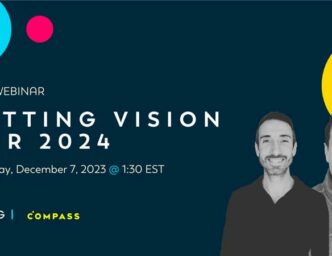Change is an inevitable part of any organization’s life, and it becomes even more critical when it involves people. Losing an employee can be hard, but by preparing for the change, this can be an opportunity to reassess your team and identify gaps or opportunities. An employee transition plan lays the groundwork for navigating this change with minimal disruption to business operations.
Let’s explore everything you need to know about creating an employee transition plan.
What is an Employee Transition Plan?
An employee transition plan is a living document that outlines the key projects, responsibilities, and other details of an employee’s role.
This plan provides a structured approach or a standard operating procedure (SOP) for:
- handing over responsibilities
- managing pending and future tasks
- ensuring smooth operational continuity
A transition plan doesn’t solely focus on daily details, tasks, and responsibilities of an employee. It also provides a framework for knowledge sharing and transfer, mitigating risks, and setting and achieving expectations.
Typically, an employee transition plan is used when someone is leaving a team or an organization, whether temporarily or permanently. However, it can also be helpful when handing over a project, bringing on new employees, or shifting after a company merger or acquisition.
When is an Employee Transition Plan Needed?
Employee transitions can happen at all levels of an organization, for many reasons. Everything from parental leave to promotions can shake up a business. Here’s a quick look at some relevant scenarios.
Promotions
The most exciting reason to create a transition plan with an employee is when they receive a promotion within the company. Part of their succession planning should include creating a transition plan.
Resignations and Retirements
When an employee selects to resign from their role or retire from your company, a transition plan helps to retain their valuable knowledge of the position.
Shift in Job Roles
There are times when companies need to restructure, which may cause a change in job titles, descriptions, and duties. If your company makes a strategic shift, it’s important to create a transition plan that helps redefine responsibilities and reassures employees about their future in the company.
Long-Term Absences
Employees may take parental leave, extended medical leave, or a personal sabbatical. Regardless of the reason, a transition plan facilitates the continuity of their duties during their absence.
Why is an Employee Transition Plan So Important?
A thoughtful and well-designed employee transition plan offers many benefits to your company, including the following:
- Ensures business continuity and avoids disruptions to crucial projects
- Facilitates smooth knowledge transfer to new and existing team members
- Reduces uncertainty and anxiety for both remaining team members and the employee in transition as they move into their new role
- Promotes employee engagement and morale by including the employee in the transition process
- Prevents business losses, missed opportunities, and other risks that can happen during transitional phases when everyone’s core focus is pulled elsewhere for a while
- Saves time and resources with the ability to refer to a set plan while things are busy and hectic during a massive change
While consistent communication among stakeholders will also help with these goals, an employee transition plan is a written resource that can be referenced again and again.
Key Elements of a Transition Plan
An employee transition plan serves as an SOP or blueprint, providing all the key details of an employee’s duties. It provides everything a manager or team needs to know before someone leaves their role.
But what goes into an employee transition plan?
A List of Daily, Project, and Overarching Responsibilities
This transition plan element tops the list because you need to understand what the employee is doing currently. For example, they might have been hired to conduct one set of responsibilities according to their job description. However, they might have added to their roster of responsibilities due to their initiative or the company’s changing priorities.
A comprehensive list of an employee’s responsibilities offers a holistic view of their role, ensuring no aspect or duty is overlooked during the transition. It also helps their successor prioritize tasks and manage their time in the context of the full spectrum of their new role and responsibilities.
Finally, a detailed list of duties provides leadership with ideas about necessary training for the successor in the position.
A Detailed Timeline
Chances are you have a limited time to help one employee transition to a new position while bringing in their replacement. It’s a tricky time for everyone who wants to enjoy a smooth and streamlined change, and a timeline helps keep everyone on track.
A Log of Current Projects and Upcoming Deadlines
You need to know about all the employee’s ongoing projects, including anything they plan to complete before leaving and how much time it may take them to complete it. If they are unsure whether they can complete a current project, ensure that they provide instructions for their successor that include the following:
- A detailed description of the project
- A general outline of what it’ll take to complete the project
- Timelines
- A list of project owners
- Access to all relevant files
- Submission process
Key Contacts
As your employee has worked on projects, they have likely worked in with co-workers, clients, vendors, and other stakeholders. An employee transition plan needs to include this information, with details like:
- Name
- Job title
- Company
- Reason for contact
- Email address
- Phone number
A contacts list allows the successor to connect quickly with key stakeholders.
What is a Transition Plan Template?
A transition plan template is fairly straightforward. It’s a reusable guide or checklist of everything you need to create an employee transition plan. By having a standard template, you can more easily plan for any departure or leave of absence.
Human resources (HR) or leadership might choose to create a template for the entire company, or each individual department might create their own templates. Either way, a transition plan template is just the starting point. It will still need to be filled out for each individual employee in transition.
An employee transition plan template can be as simple as a document with the details explained above, with an explanation for each element.
- Duties and responsibilities
- Daily, weekly, monthly, quarterly, as needed
- Priorities
- Transition timeline
- Current projects
- Any partners and stakeholders
- Access to all files
- Upcoming deadlines
- Key stakeholders
- Leaders
- Direct reports
- Clients
- Vendors
- Co-workers
You can create the template in a simple document or spreadsheet, or you can use a more robust tool like a SharePoint site or Asana project. As long as the template can be duplicated, it can work.
How to Create a Transition Plan with Your Employee
Even when starting with a template, you need to create a custom transition plan for each employee leaving your team or organization. Here are some tips to get started.
Start the Conversation
Whether it’s you or the employee making the change, it’s important to start with a candid and professional conversation. Listen to their perspective and gather insights about their job responsibilities, current projects, and anything else the transition should entail.
Assess the Employee’s Role and Responsibilities
Double-check your records of the employee’s position, job description, and record of any changes in responsibilities during their tenure. See how everything you have recorded aligns with the employee’s assessment of their role.
Focus on factors like current projects and key contacts.
Establish the Employee Transition Plan Objectives
Clearly define what you and the employee need to achieve by the end of the transition period.
Choose a Successor
Who will take over this employee’s role? Choosing a successor is highly situational. For example, if an employee is just going out on temporary leave, then multiple team members might handle different responsibilities. However, if an executive is retiring, then leadership needs plenty of time either to recruit a new executive or to promote from within the company.
Ideally, whoever is leaving will work with you to choose their successor.
Draft the Transition Document
Drafting the transition document is the first official step in managing an employee transition. The handover document helps you stay focused on what to cover during the transition period, outlining everything efficiently in a clear format.
This document also helps you track information such as the name of the incumbent employee, the successor, the supervisor, and the new employee’s start date.
Ask the Employee to Review the Transition Plan
Once you draft the transition plan, let the employee review it and provide any necessary feedback. They should fill out any relevant information about projects, contacts, and other important details.
Onboard and Offboard
Depending on the circumstances of your employee’s transition, they might be able to assist in training their successor. Regardless of their availability, it’s your role as a leader to onboard the new employee and to offboard the leaving employee.
Ease Transitions by Hiring Top Talent
Transitions can be challenging even under the best of circumstances, but you can make them easier with careful planning. Both an employee transition plan and a well-vetted new hire are critical to ongoing success when a valued employee leaves their role.
Insight Global is available to help with all of your hiring needs. Contact us today, and a hiring partner will reach out shortly to offer customized hiring solutions.


 by Brita Long
by Brita Long


 by Insight Global Staff
by Insight Global Staff 


 by Erin Ellison
by Erin Ellison